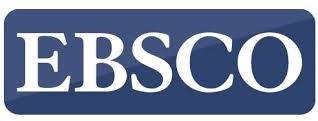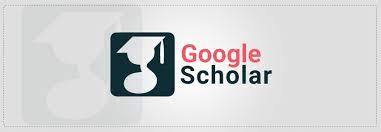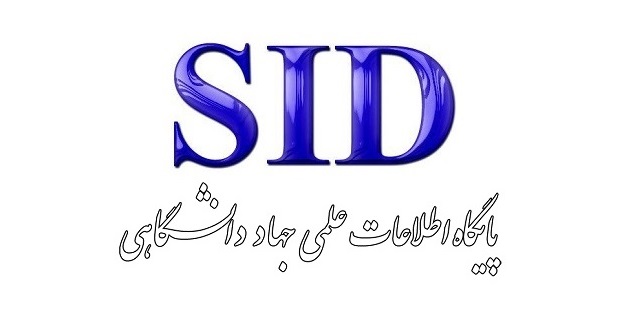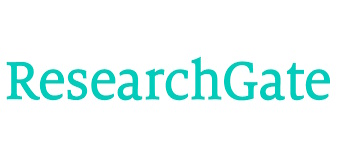اعتبارسنجی الگوی رهبری دیجیتال در صنعت بانکداری ایران
کلمات کلیدی:
رهبری دیجیتال, ، اعتبارسنجی مدل, ، بانکداری ایران, ، رهبری استراتژیک, ، امنیت سایبریچکیده
هدف این پژوهش اعتبارسنجی الگوی رهبری دیجیتال در صنعت بانکداری ایران با تمرکز بر مؤلفههای مؤثر بر رهبری دیجیتال و سنجش برازش مدل مفهومی پیشنهادی بود. پژوهش حاضر از نوع توصیفی-پیمایشی و از نظر هدف کاربردی است. جامعه آماری شامل کارشناسان و کارکنان بانکهای منتخب ایران بود. با استفاده از روش نمونهگیری خوشهای تصادفی و فرمول کوکران، 340 نفر به عنوان نمونه انتخاب شدند. ابزار گردآوری دادهها، پرسشنامه محققساخته بود که روایی آن بهصورت صوری و پایایی آن با آزمون آلفای کرونباخ (0.88) بررسی شد. برای تحلیل دادهها از مدلسازی معادلات ساختاری با استفاده از نرمافزار Smart PLS3 بهره گرفته شد. تحلیل دادهها منجر به شناسایی 13 مؤلفه اصلی رهبری دیجیتال شد. یافتهها نشان دادند که مؤلفههایی همچون «رهبری در حوزه امنیت سایبری و حریم خصوصی» تأثیر معناداری بر مؤلفههای دیگر مانند «رهبری دادهمحور» (β = 0.633)، «رهبری فرهنگی و انسانی» (β = 0.523) و «رهبری مالی و کارآفرینی دیجیتال» (β = 0.650) دارند. همچنین شاخص برازش کلی مدل (GOF) برابر با 0.485 به دست آمد که نشاندهنده برازش قوی مدل است. معیارهای R²، Q² و بارهای عاملی نیز همگی در سطوح قابل قبول قرار داشتند. مدل پیشنهادی رهبری دیجیتال از برازش مناسب و توان پیشبینی قابل قبولی برخوردار است. این مدل میتواند مبنایی برای تدوین سیاستهای توسعه رهبری دیجیتال در صنعت بانکداری ایران باشد و به مدیران در برنامهریزیهای راهبردی کمک کند.
دانلودها
مراجع
Al Issa, H. E., & Omar, M. M. S. (2024). Digital innovation drivers in retail banking: the role of leadership, culture, and technostress inhibitors. International Journal of Organizational Analysis, 32(11), 19-43. https://doi.org/10.1108/IJOA-08-2023-3905
Amelda, B., Alamsjah, F., & Elidjen, E. (2021). Does The Digital Marketing Capability of Indonesian Banks Align with Digital Leadership and Technology Capabilities on Company Performance? Commit (Communication and Information Technology) Journal, 15(1), 9-17. https://doi.org/10.21512/commit.v15i1.6663
Ammirato, S., Felicetti, A. M., Gala, M. D., Aramo-Immonen, H., Jussila, J., & Karkkainen, H. (2019). The use of social media for knowledge acquisition and dissemination in B2B companies: An empirical study of Finnish technology industries. Knowledge Management Research and Practice, 17(2), 52-69. https://doi.org/10.1080/14778238.2018.1541779
Azi, R., Tanuwijaya, J., & Gunawan, A. W. (2024). The influence of digital leadership on employee performance through digital culture and innovation work behavior at Bank Indonesia. Jurnal Mantik, 7(4), 4021-4030.
Benitez, J., Arenas, A., Castillo, A., & Esteves, J. (2022). Impact of digital leadership capability on innovation performance: The role of platform digitization capability. Information & Management, 59(2), 103590. https://doi.org/10.1016/j.im.2022.103590
El Sawy, O. A., Kræmmergaard, P., Amsinck, H., & Vinther, A. L. (2020). How LEGO built the foundations and enterprise capabilities for digital leadership. In Strategic information management (pp. 174-201). https://doi.org/10.4324/9780429286797-8
Hensellek, S. (2020). Digital leadership: A framework for successful leadership in the digital age. Journal of Media Management and Entrepreneurship (JMME), 2(1), 1-15. https://doi.org/10.4018/JMME.2020010104
Hüsing, T., Dashja, E., Gareis, K., Korte, W. B., Stabenow, T., & Markus, P. (2015). E-leadership skills for small and medium sized enterprises: Final Report.
Ingram Bogusz, C., Teigland, R., & Vaast, E. (2019). Designed entrepreneurial legitimacy: the case of a Swedish crowdfunding platform. European Journal of Information Systems, 28(3), 318-335. https://doi.org/10.1080/0960085X.2018.1534039
Kane, G. C., Phillips, A. N., Copulsky, J., & Andrus, G. (2019). How digital leadership is (n't) different. MIT Sloan management review, 60(3), 34-39. https://search.proquest.com/openview/344afd802ed85d6e1e3268c45af8407b/1?pq-origsite=gscholar&cbl=26142
Klein, M. (2020). Leadership characteristics in the era of digital transformation. https://doi.org/10.15295/bmij.v8i1.1441
Manzaritavakoli, A., Mehdizadeh, S., & Salajeghe, S. (2023). Designing a model for establishing a learning organization with an emphasis on knowledge leadership and learning levels in the organization of renovation, development and equipping of schools in the country with a mixed approach. Journal of New Approaches in Educational Administration, 14(5), 152-135. https://jedu.marvdasht.iau.ir/m/article_6169.html?lang=en
Quaquebeke, N. V., & Gerpott, F. H. (2023). The Now, New, and Next of Digital Leadership: How Artificial Intelligence (AI) Will Take Over and Change Leadership as We Know It. Journal of Leadership & Organizational Studies, 15480518231181731. https://doi.org/10.1177/15480518231181731
Rudito, P., & Sinaga, M. F. (2017). Digital mastery, Membangun kepemimpinan digital untuk memenangkan era disrupsi. Gramedia Pustaka Utama. https://books.google.com/books?hl=en&lr=&id=_948DwAAQBAJ&oi=fnd&pg=PR1&dq=Rudito,+P.+and+M.+F.+Sinaga+(2017).+Digital+mastery,+Membangun+kepemimpinan+digital+untuk+memenangkan+era+disrupsi,+Gramedia+Pustaka+Utama.+%09&ots=SniV0B_Xox&sig=gu4B2wxMtO-1enTdp746xlwKLGU
Salleh, K., Sharifuddin, S. I. S. O., Chong, S. C., Ahmad, S. N. S., & Sharifuddin, S. S. O. (2011). KM implementation in a public sector accounting organization: an empirical investigation. Journal of Knowledge Management, 15, 497-512. https://doi.org/10.1108/13673271111137457
Senadjki, A., Au Yong, H. N., Ganapathy, T., & Ogbeibu, S. (2024). Unlocking the potential: the impact of digital leadership on firms' performance through digital transformation. Journal of Business and Socio-Economic Development, 4(2), 161-177. https://doi.org/10.1108/JBSED-06-2023-0050
Sia, S. K., Soh, C., & Weill, P. (2016). How DBS Bank Pursued a Digital Business Strategy. MIS Quarterly Executive, 15(2). https://search.ebscohost.com/login.aspx?direct=true&profile=ehost&scope=site&authtype=crawler&jrnl=15401960&AN=115879196&h=OnTFV7IOx%2FySeDQ4dv82EHCv96QonvoBtBIcFmmNwkPhLaiOgXBnSDQKcgzT73MIhHCsJAzGCEM0MsPqTewjuw%3D%3D&crl=c
Temelkova, M. (2018). Skills for digital leadership-Prerequisite for developing high-tech economy. International Journal of Advanced Research in Management and Social Sciences, 7(12), 50-74. https://www.indianjournals.com/ijor.aspx?target=ijor:ijarmss&volume=7&issue=12&article=007
Toduk, Y., & Gande, S. J. A. L. S. (2016). What's next in Turkey. A New Leadership Model for Connected Age Amrop Leadership Series. https://www.aesc.org/insights/thought-leadership/transformational-leadership/amrop-whats-next-turkey-new-leadership
Weill, P., & Woerner, S. (2018). What's your digital business model? six questions to help you build the next-generation enterprise. Harvard Business Press. https://books.google.com/books?hl=en&lr=&id=yLsyDwAAQBAJ&oi=fnd&pg=PT6&dq=Weill,+P.+and+S.+Woerner+(2018).+What%27s+your+digital+business+model%3F+six+questions+to+help+you+build+the+next-generation+enterprise,+Harvard+Business+Press.+%09&ots=HXMFeMweyy&sig=rzt_iIWqRWB5F6RtpTRqTeBPK78
Zeike, S., Bradbury, K., Lindert, L., & Pfaff, H. (2019). Digital leadership skills and associations with psychological well-being. International journal of environmental research and public health, 16(14), 2628. https://doi.org/10.3390/ijerph16142628
Zhu, P. (2015). Digital master: Debunk the myths of enterprise digital maturity. Lulu Press, Inc. https://dl.acm.org/doi/abs/10.5555/2789384
دانلود
چاپ شده
ارسال
بازنگری
پذیرش
شماره
نوع مقاله
مجوز
حق نشر 2025 Tahereh Shateri, Alireza Amirkabiri, Mohammadreza Rabiei Mandejin (Author)

این پروژه تحت مجوز بین المللی Creative Commons Attribution-NonCommercial 4.0 می باشد.









